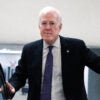Shortly after the Trump administration takes office in January 2017, it will need to consider its strategy in Afghanistan, the country from which al-Qaeda launched the 9/11 attacks and where U.S. and NATO-backed Afghan forces continue to battle the Taliban 15 years after the Islamist extremist group was ousted from power.
Just last week, the Taliban conducted a suicide bombing on the largest U.S. military base in Afghanistan, killing two American servicemen and two American contractors and wounding at least 17 others. The attack was aimed at weakening U.S. and NATO resolve and convincing them to exit the country altogether.
The Daily Signal depends on the support of readers like you. Donate now
While most attention is currently on the fight against ISIS in Iraq, Afghanistan remains a major front in the global terrorism fight and will likely come up quickly on President-elect Trump’s radar screen.
U.S. forces were given expanded authorities to engage in offensive operations with their Afghan counterparts earlier this year, and have recently helped fend off Taliban advances, particularly in the northern city of Kunduz and in parts of the southern province of Helmand.
However, the incoming administration must consider whether holding the line against the Taliban is sufficient or whether increasing U.S. and NATO troop levels might be necessary to turn up the pressure on the Taliban.
A first step would be to consult U.S. military commanders on the ground and then listen to their advice. In 2013, former U.S. Commander in Afghanistan General John Allen recommended keeping 20,000 U.S. forces in the country post-2014 as the least risky option. Unfortunately, President Obama opted for the riskier option of leaving only about half that amount.
Although the U.S. aid footprint in Afghanistan inevitably will diminish over time, Washington must maintain programs that bolster democratic trends, contribute to economic development and regional economic integration, and that can be insulated from the pervasive corruption that plagues Afghan society. Too much aid has been squandered over the last 15 years and a new administration will have to review aid policies and programs, insisting on efficiency and results.
Lastly, the fight against the Taliban in Afghanistan will not succeed so long as the movement’s leaders find safe haven in Pakistan. The next administration will have to find new avenues for convincing Pakistanis it is in their own self-interest to crack down on the Taliban and to join a peace process.
The change in administration provides an opportunity to recommit to the fight in Afghanistan and sharpen U.S. strategy toward Pakistan in a way that brings greater stability and economic prosperity to the region.




























